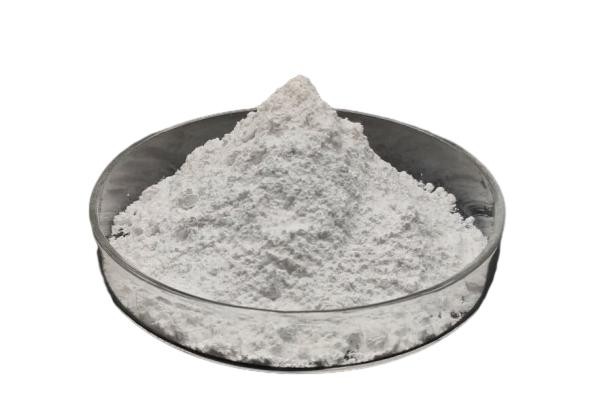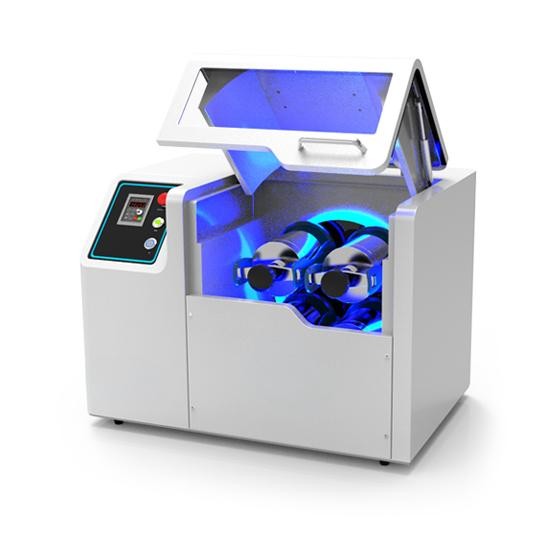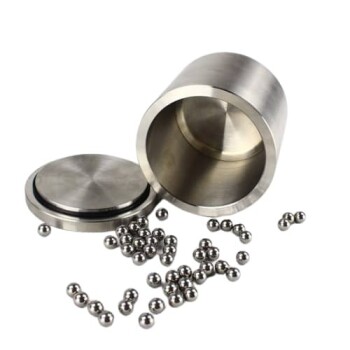Introduction to Vertical Ball Mill

Vertical ball mills are a key equipment for grinding materials into fine powder, and their working principle relies on impact and attrition mechanisms. In this article, we will explore the construction, operations, and advantages of these mills, and compare them with horizontal mills. Understanding how vertical ball mills operate and achieve size reduction through rotation and grinding is crucial for industries working with materials such as iron ore and ceramics. Let's delve into the critical speed, types, and applications of vertical ball mills, and discover why they are a popular choice for many manufacturing processes.
Working Process of a Vertical Ball Mill
A vertical ball mill operates by rotating a cylinder with grinding balls like steel, ceramic, or pebble balls to grind materials into a fine or less-coarse medium. The materials, such as iron ore and ceramics, are added to the ball mill and fed into the cylinder. The mill rotates either on its vertical or horizontal axis, causing the grinding balls to bounce around and strike the enclosed material. This striking force helps in grinding the materials into the desired consistency.
To achieve critical speed, the enclosed ball inside the mill needs to rotate along the inner walls. If the critical speed is not reached, the ball will remain stationary at the bottom without any impact on the material. Gravity, media flotation, and abrasion can prevent vertical mills from being loaded with as much media as horizontal mills, limiting the volume charge and causing fluidizing issues related to the use of finer grinding media.
In traditional vertical mills, achieving very fine particle sizes can be a challenge. Such mills are often limited to a finished particle size of approximately 5 microns, requiring careful attention to media size. The average vertical mill consists of a large vertical grinding chamber with a centrally located agitator and several grinding disks mounted on it. The premix material enters from the bottom, is sheared by rotating disks, and exits through a separation device at the top of the vessel. Typical tasks for vertical mills include precision drilling, fly cutting, boring, and milling.

In the case of a continuously operated ball mill, the material to be ground is fed from one end through a cone, and the product is discharged through another cone. As the shell rotates, the grinding balls are lifted up on the rising side of the shell and then cascade down onto the feed. The solid particles in between the balls and ground are reduced in size by impact. The force of the impact breaks the material into smaller pieces, while the friction between the balls and the material to be ground helps wear down the material into a powder.
Types of Ball Mills and Their Applications
When it comes to milling and grinding materials, different types of ball mills have various applications and operating principles. This overview delves into the characteristics and uses of planetary ball mills, mixer mills, and vibration mills, outlining their operating principles and maximum capacities.
Planetary Ball Mills
Planetary Ball Mills are a high-speed and versatile option, ideal for fine grinding of hard, medium-hard, soft, brittle, tough, and moist materials. The comminution process primarily occurs through the high-energy impact of grinding balls in rotating grinding bowls. This type of mill is suitable for dry grinding, in suspension, or in inert gas. Furthermore, Planetary Mills can be utilized for mixing and homogenizing emulsions and pastes, as well as for mechanical alloying and activation in materials research.
Applications:
- Grinding of mining ores, coal, pigments, and feldspar for pottery
- Wet or dry grinding for particle size reduction and shape modification
- Mechanical alloying, mixing, and powder production
Vibration Mills

Utilizing vibrations at specific frequencies and amplitudes, the principle of vibration milling involves breaking materials down into smaller sizes. This process involves placing the materials in a container with a series of balls or rods, subjecting them to controlled vibrations, impacting against the materials, and breaking them down into smaller particles.
Applications:
- Material processing
- Achieving detailed grinding of samples through impact, extrusion, and friction of grinding balls
- Widely used in materials science and engineering for efficient grinding and mixing of various materials including metals, ceramics, and minerals
Industrial Applications:
- Future Potential in Nanomaterial Preparation: Ball mills have simplified the preparation process and can control the size, shape, and surface properties of nanoparticles, providing new avenues for the preparation of nanomaterials.
In conclusion, the diverse realm of ball mills offers a multitude of options for materials processing, emphasizing their critical role in various scientific and industrial applications.
Advantages of Vertical Ball Mills

Vertical ball mills offer several advantages that make them a valuable tool in the milling industry. Here are some key benefits of using vertical ball mills:
-
Producing Fine Powder: Vertical ball mills are capable of producing very fine powder with a particle size less than or equal to 10 microns. This makes them ideal for applications where a fine end product is desired.
-
Suitability for Toxic Materials: Vertical ball mills are suitable for milling toxic materials as they can be operated in an enclosed form, minimizing the risks associated with handling such substances.
-
Wide Range of Applications: These mills have a wide range of applications across various industries, including pharmaceuticals, chemicals, ceramics, and more. Their versatility makes them a valuable asset in different manufacturing processes.
-
Continuous Operation: Vertical ball mills can operate continuously, allowing for efficient and uninterrupted milling processes. This is particularly beneficial in industries where uninterrupted production is crucial.
-
Milling Abrasive Materials: Vertical ball mills are capable of milling abrasive materials effectively, providing a reliable solution for processing materials that may cause excessive wear on equipment.
Overall, the vertical design of ball mills simplifies sample loading and unloading, ensures temperature uniformity for consistent outcomes, and offers a compact footprint suitable for laboratories with limited space. These advantages make vertical ball mills a preferred choice for many industries seeking reliable and efficient milling solutions.
Comparison Between Vertical and Horizontal Mills

In the realm of fine particle size reduction, the choice between vertical and horizontal mills holds significant importance. Here, we contrast the two types of mills in terms of design, media volume charge, fluidizing issues, and achieving fine particle sizes, shedding light on the advantages and limitations of each.
Design
Horizontal mills are characterized by a tubular grinding chamber with an agitator shaft and disks, facilitating efficient energy transfer to the fluid and uniform media distribution. On the other hand, vertical mills feature a large vertical grinding chamber with a centrally located agitator and grinding disks, limiting media volume charge and introducing fluidizing issues.
Media Volume Charge
Horizontal mills excel in their efficient utilization of small amounts of media, accommodating media sizes ranging from 0.25 mm to 2 mm. They significantly reduce product loss and offer maximal color strength, gloss durability, and yield. In contrast, vertical mills face limitations in media volume charge due to gravity, media flotation, and abrasion issues. This restricts their loading capacity in comparison to horizontal mills, impeding their efficiency in achieving fine particle sizes.
Fluidizing Issues and Achieving Fine Particle Sizes
Horizontal mills boast minimal contamination, reduced process time, and lower raw material costs, making them highly adept at achieving fine particle sizes. Their consistent and predictable performance, coupled with minimal maintenance requirements, positions them prominently for wet milling operations. In contrast, traditional vertical mills and ball mills are often confined to achieving a finished particle size of approximately 5 microns, necessitating meticulous attention to media size and posing challenges in obtaining very fine particle sizes.
Conclusion
While horizontal mills offer stellar attributes in wet milling processes and fine particle size reduction, vertical mills confront inherent limitations in media volume charge and the attainment of ultrafine particle sizes. Understanding the distinct design and operational characteristics of each mill type is pivotal in selecting the most suitable equipment for specific milling requirements.
By delving into the nuances of these mill types, manufacturers and operators can make informed decisions that align with their milling objectives, optimizing process efficiency and end-product quality.
Related Products
- High Energy Vibratory Laboratory Ball Mill Grinding Mill Single Tank Type
- High Energy Vibratory Laboratory Ball Mill Double Tank Type
- High Energy Planetary Ball Mill Milling Machine for Laboratory
- Laboratory Planetary Ball Mill Cabinet Planetary Ball Milling Machine
- High Energy Vibratory Ball Mill for Lab Use
Related Articles
- Maximizing Grinding Efficiency: The Power of Planetary Ball Mills
- Disc / Cup Vibratory Mill: A Comprehensive Guide for Laboratory Experts
- Features of Different Laboratory Mills: An Overview
- Disc / Cup Vibratory Mill: A Comprehensive Guide to Grinding Equipment
- Disc / Cup Vibratory Mill: A Comprehensive Guide to Its Functions and Applications








